Region heads for hotel boom
28 March 2024

This report on hotel investment also includes: GCC becomes a top tourist destination
Alongside the major infrastructure and construction schemes currently under way in the region, contractors in the Middle East and North Africa (Mena) are looking forward to a significant inbound spree of hospitality-linked project work.
A combination of government-led touristic masterplans – led by expansive and ambitious schemes in Saudi Arabia – alongside private sector investment in individual hotels and resorts has led to the build-up of a $54bn pipeline of hospitality-linked projects in the pre-execution, study and planning stages across the Mena region, according to regional projects tracker MEED Projects.
With this ramp up in planned hotel schemes, the region is now leading the global recovery in tourism projects, in a reflection of broader travel trends that have seen tourist arrival numbers grow to exceed pre-pandemic levels by 22%, according to GlobalData.
Projects under way
The $54bn project pipeline compares to a value of $22.7bn of work currently under execution in the region, and a long-term tally of $95.4bn-worth of hotel and resort project contract awards over the past decade and a half.
In contrast to the pace of activity since 2009, however, the region’s upcoming projects are set to be delivered in a much tighter timeframe. Almost the entire $54bn-worth of planned hotel and resort projects is scheduled or expected for award before the end of 2025 and set to be completed in advance of 2030.
This sets the stage for an intensified period of hotel investment and development over the next five years that could surpass the last investment boom cycle in 2014 and 2015, when hotel project award totals reached $9.1bn and $10bn, respectively.
Since 2009, the average annual value of hotel and resort project awards has been $6.4bn, with activity waxing and waning over the intervening period. Hotel and resort schemes fell away dramatically in 2020 amid the Covid-19 pandemic, with awards reaching a low of $2.6bn in 2021. Activity then recovered in 2022 and 2023 to the above-average values of $6.7bn and $6.6bn, respectively.
So far in 2024, there have been $1.3bn of hotel and resort project awards, but there is a further $5.2bn in work under bid and set to be awarded this year. The award of those projects would take the tally for 2024 up to $6.5bn – a comparable awards total to those of 2022 and 2023. There is then an additional $15bn-worth of projects in design and due for award in 2024 on the basis of announced and expected delivery timeframes.
If the value of projects under bid and just a third of the projects under design and also provisionally due for award in 2024 are let as expected, it will be a record year for hotel project awards in the region.
Saudi investment spree
Looking at the $54bn-worth of projects split by market, the pipeline is dominated by the touristic megaprojects currently under development in Saudi Arabia, which account for $39.9bn or 74% of the total value of upcoming work.
The hotel and resort projects in the kingdom are in turn heavily weighted towards several provinces that have been targeted for touristic development. These include Tabuk Province, which has $12.6bn-worth of upcoming hospitality-linked projects as part of the Neom and Red Sea Project developments; the Medina and Mecca provinces, which together hold $16.4bn-worth of upcoming schemes linked to the annual Hajj and Umrah tourism industry; Riyadh, with $7.1bn-worth of upcoming work, including that linked to the Qiddiya masterplan; and smaller values in Asir, the Eastern Province and others.
In recent months, several hotel schemes have been announced in the kingdom. In late February, Neom announced plans for a Raffles-branded property at its Trojena mountain resort development. The hotel will be located in the Discover cluster of the resort and is slated to open in 2027. The first hotel projects at Trojena are meanwhile well under way, with local contractor Isam Khairi Kabbani Group beginning work in December on the estimated $100m Chedi Trojena, with completion expected in 2026.
In early March, Red Sea Global (RSG) announced plans for a Four Seasons hotel at its Triple Bay development at Amaala, with Dubai-based U+A Architects, owned by the French engineering firm Egis, as project architect. Four Seasons has also announced other upcoming projects in the kingdom, including a Red Sea project at Shura Island, another at Neom’s Sindalah Island and projects on the Jeddah Corniche and at Diriyah, outside of Riyadh. Saudi Arabia’s Kingdom Holding Company has a 24% stake in Four Seasons, alongside majority shareholder Cascade Investment.
March also saw work begin on Neom’s Epicon Towers – a technically complex twin-tower hotel – with enabling works being undertaken by the local Ammico Contracting. Previously known as the Gas Station Hotel, the design for the project was developed by Singapore’s Meinhardt Group, with the Hong Kong-based 10 Design serving as the lead consultant on the project.
These upcoming schemes are set to join $7.8bn-worth of Saudi hotel projects awarded in the past three years, including $1.8bn-worth of awards in Tabuk. In July 2023, RSG awarded a contract at Triple Bay to the local Mas Engineering for the construction of the Marina Lifestyle Hotel & Village. In May, RSG contracted a joint venture of Egypt’s Hassan Allam Holding and the local Rawabi Specialised Contracting to construct the Triple Bay Rosewood Hotel.
Also in Tabuk, Hilton International opened its first Hampton hotel in March, having jointly developed the project with the Riyadh-based Cayan Group. The project was awarded in January 2022 to local contractor BEC Arabia, with Egypt’s Sabbour Consulting acting as project manager.
Elsewhere in the kingdom, the Public Investment Fund-backed Dan Company also tendered three hotels to be operated by Hilton at its Palm One project, a farm-based tourism destination in Al Ahsa. The deadline for bid submissions is 30 April. Hong Kong-based LWK Partners is the lead designer for the project.
Broader regional spending
In a prominent example of government-led hotel and resort development activity outside of Saudi Arabia, Oman has recently been progressing several new touristic masterplans.
Oman’s Heritage & Tourism Ministry issued a tender in February inviting consultants to bid to develop a tourism project masterplan for the Remal Al Sharqiyah dunes of North and South Al Sharqiyah. The tender was issued on 27 February, with a bid submission deadline of 17 April.
Earlier in February, Oman’s Housing & Urban Planning Ministry (MHUP) also revealed the designs for a new $2.4bn development on Jebel Al Akhdar named the Omani Mountain Destination and masterplanned by Canadian engineering firm AtkinsRealis.
The same month, the MHUP also announced the $1.3bn Al Khuwair Downtown and Waterfront project in Muscat, engaging Zaha Hadid Architects for the project design alongside real estate consultant CBRE.
In the UAE, much of the hotel and resort development is proceeding in a more piecemeal manner, with a greater number of smaller, more discrete touristic schemes. One major development in November was Dubai developer Al Wasl’s award of the $1.3bn contract to build The Island to China State Construction Engineering Corporation in the largest construction contract in Dubai since 2017.
The Island is a 10.5-hectare reclaimed island that will feature MGM, Bellagio and Aria branded hotels. The local APCC was the earthworks contractor, with the project being managed by Germany’s Buro Kling Architectural Engineering Consulting and the local Consultant HSS.
Another recent example of UAE project activity was Modon Properties’ award in November of the contract for a four-star sports hotel on Abu Dhabi’s Al Hudayriyat Island to Trojan General Contracting. The UK’s Atkins is the project consultant, with Canada’s Ellisdon as the project management consultant.
What is apparent from all of this activity is the clear strengthening of hotel project development as regional governments pursue tourism investments both as a long-term economic diversification strategy and one that dovetails with robust and rising visitor traffic to the region.
As long as these trends remain, strong ongoing government and private sector investment in hospitality-linked projects can be expected, and with it, the delivery of the region’s $54bn hotel project pipeline by 2030.
Exclusive from Meed
-
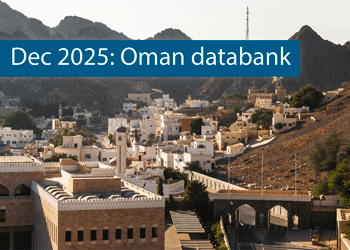 Oman’s growth forecast points upwards
Oman’s growth forecast points upwards24 December 2025
-
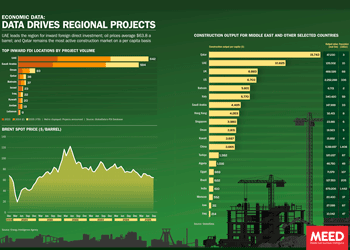 December 2025: Data drives regional projects
December 2025: Data drives regional projects23 December 2025
-
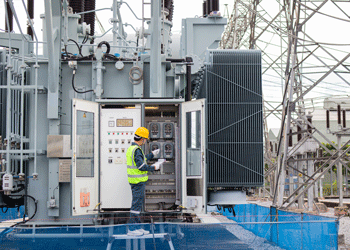 Local firm bids lowest for Kuwait substation deal
Local firm bids lowest for Kuwait substation deal22 December 2025
-
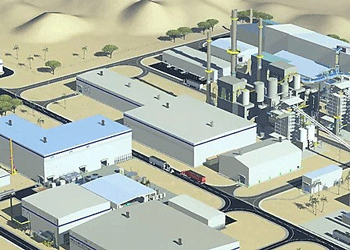 Saudi-Dutch JV awards ‘supercentre’ metals reclamation project
Saudi-Dutch JV awards ‘supercentre’ metals reclamation project22 December 2025
-
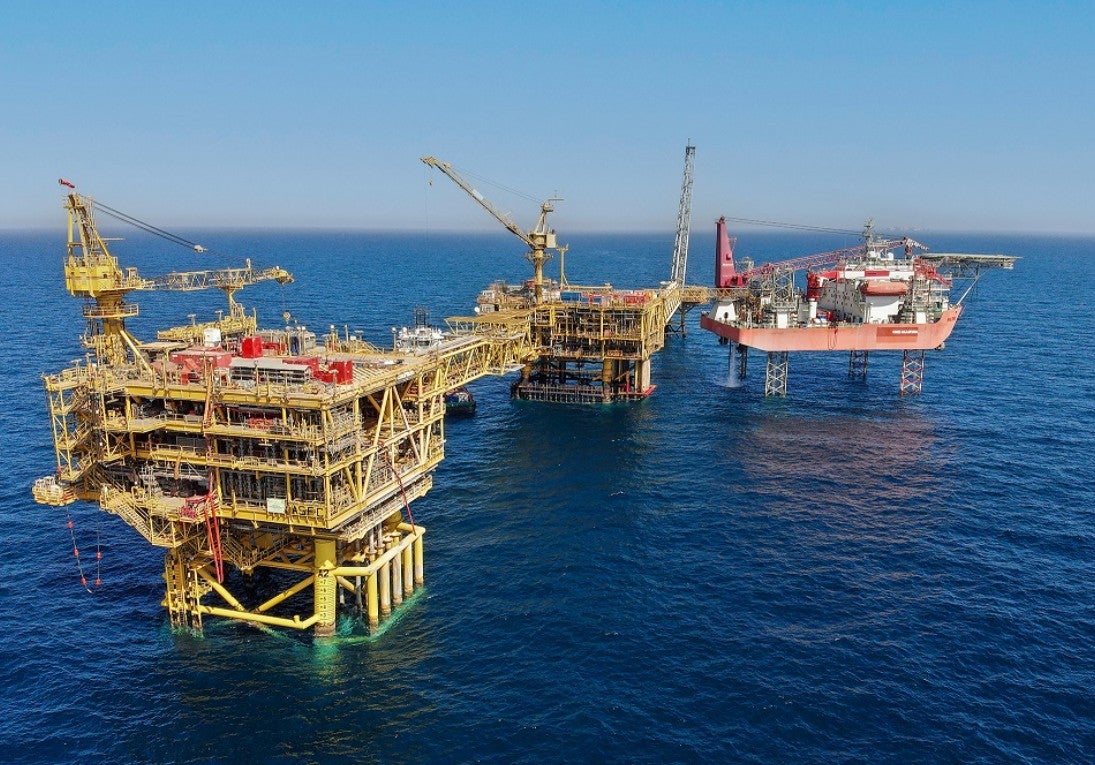 QatarEnergy LNG awards $4bn gas project package
QatarEnergy LNG awards $4bn gas project package22 December 2025
All of this is only 1% of what MEED.com has to offer
Subscribe now and unlock all the 153,671 articles on MEED.com
- All the latest news, data, and market intelligence across MENA at your fingerprints
- First-hand updates and inside information on projects, clients and competitors that matter to you
- 20 years' archive of information, data, and news for you to access at your convenience
- Strategize to succeed and minimise risks with timely analysis of current and future market trends

Related Articles
-
 Oman’s growth forecast points upwards
Oman’s growth forecast points upwards24 December 2025

MEED’s January 2026 report on Oman includes:
> COMMENT: Oman steadies growth with strategic restraint
> GVT & ECONOMY: Oman pursues diversification amid regional concerns
> BANKING: Oman banks feel impact of stronger economy
> OIL & GAS: LNG goals galvanise Oman’s oil and gas sector
> POWER & WATER: Oman prepares for a wave of IPP awards
> CONSTRUCTION: Momentum builds in construction sectorTo see previous issues of MEED Business Review, please click herehttps://image.digitalinsightresearch.in/uploads/NewsArticle/15306449/main.gif -
 December 2025: Data drives regional projects
December 2025: Data drives regional projects23 December 2025
Click here to download the PDF
Includes: Top inward FDI locations by project volume | Brent spot price | Construction output
MEED’s January 2026 report on Oman includes:
> COMMENT: Oman steadies growth with strategic restraint
> ECONOMY: Oman pursues diversification amid regional concerns
> BANKING: Oman banks feel impact of stronger economy
> OIL & GAS: LNG goals galvanise Oman’s oil and gas sector
> POWER & WATER: Oman prepares for a wave of IPP awards
> CONSTRUCTION: Momentum builds in construction sectorTo see previous issues of MEED Business Review, please click herehttps://image.digitalinsightresearch.in/uploads/NewsArticle/15306140/main.gif -
 Local firm bids lowest for Kuwait substation deal
Local firm bids lowest for Kuwait substation deal22 December 2025
The local Al-Ahleia Switchgear Company has submitted the lowest price of KD33.9m ($110.3m) for a contract to build a 400/132/11 kV substation at the South Surra township for Kuwait’s Public Authority for Housing Welfare (PAHW).
The bid was marginally lower than the two other offers of KD35.1m and KD35.5m submitted respectively by Saudi Arabia’s National Contracting Company (NCC) and India’s Larsen & Toubro.
PAHW is expected to take about three months to evaluate the prices before selecting the successful contractor.
The project is one of several transmission and distribution projects either out to bid or recently awarded by Kuwait’s main affordable housing client.
This year alone, it has awarded two contracts worth more than $100m for cable works at its 1Z, 2Z, 3Z and 4Z 400kV substations at Al-Istiqlal City, and two deals totalling just under $280m for the construction of seven 132/11kV substations in the same township.
Most recently, it has tendered two contracts to build seven 132/11kV main substations at its affordable housing project, west of Kuwait City. The bid deadline for the two deals covering the MS-01 through to MS-08 substations is 8 January.
https://image.digitalinsightresearch.in/uploads/NewsArticle/15305745/main.gif -
 Saudi-Dutch JV awards ‘supercentre’ metals reclamation project
Saudi-Dutch JV awards ‘supercentre’ metals reclamation project22 December 2025
The local Advanced Circular Materials Company (ACMC), a joint venture of the Netherlands-based Shell & AMG Recycling BV (SARBV) and local firm United Company for Industry (UCI), has awarded the engineering, procurement and construction (EPC) contract for the first phase of its $500m-plus metals reclamation complex in Jubail.
The contract, estimated to be worth in excess of $200m, was won by China TianChen Engineering Corporation (TCC), a subsidiary of China National Chemical Engineering Company (CNCEC), following the issue of the tender in July 2024.
Under the terms of the deal, TCC will process gasification ash generated at Saudi Aramco’s Jizan refining complex on the Red Sea coast to produce battery-grade vanadium oxide and vanadium electrolyte for vanadium redox flow batteries. AMG will provide the licensed technology required for the production process.
The works are the first of four planned phases at the catalyst and gasification ash recycling ‘Supercentre’, which is located at the PlasChem Park in Jubail Industrial City 2 alongside the Sadara integrated refining and petrochemical complex.
Phase 2 will expand the facility to process spent catalysts from heavy oil upgrading facilities to produce ferrovanadium for the steel industry and/or additional battery-grade vanadium oxide.
Phase 3 involves installing a manufacturing facility for residue-upgrading catalysts.
In the fourth phase, a vanadium electrolyte production plant will be developed.
The developers expect a total reduction of 3.6 million metric tonnes of carbon dioxide emissions a year when the four phases of the project are commissioned.
SARBV first announced its intention to build a metal reclamation and catalyst manufacturing facility in Saudi Arabia in November 2019. The kingdom’s Ministry of Investment, then known as the Saudi Arabian General Investment Authority (Sagia), supported the project.
In July 2022, SARBV and UCI signed the agreement to formalise their joint venture and build the proposed facility.
The project has received support from Saudi Aramco’s Namaat industrial investment programme. Aramco, at the time, also signed an agreement with the joint venture to offtake vanadium-bearing gasification ash from its Jizan refining complex.
Photo credit: SARBV
https://image.digitalinsightresearch.in/uploads/NewsArticle/15305326/main.gif -
 QatarEnergy LNG awards $4bn gas project package
QatarEnergy LNG awards $4bn gas project package22 December 2025
QatarEnergy LNG, a subsidiary of state-owned QatarEnergy, has awarded the main engineering, procurement, construction and installation (EPCI) contract for a major package for the second phase of its North Field Production Sustainability (NFPS) project.A consortium comprising the Italian contractor Saipem and state-owned China Offshore Oil Engineering Company (COOEC) has secured the EPCI contract for the COMP5 package. The contract value is $4bn, with Saipem declaring its share to be worth $3.1bn.
Milan-headquartered Saipem said the contract will run for about five years. The scope of work comprises engineering, procurement, fabrication and installation of two compression complexes, each including a compression platform, a living quarters platform, a flare platform supporting the gas combustion system, and the related interconnecting bridges. Each complex will have a total weight of about 68,000 tonnes.
Offshore installation operations will be carried out by Saipem’s De He construction vessel in 2029 and 2030.
MEED previously reported that the following contractors submitted bids for the NFPS phase two COMP5 package:
- Larsen & Toubro Energy Hydrocarbon (India)
- McDermott (US)
- Saipem/China Offshore Oil Engineering Company (Italy/China)
QatarEnergy LNG, formerly Qatargas, is said to have issued the tender for the NFPS phase two COMP5 package in the first quarter of the year.
Contractors submitted technical bids for the COMP5 package in late June, while commercial bids were submitted by 8 October, as per sources.
Based upon initial evaluation of bids by QatarEnergy LNG, L&TEH has emerged as the lowest bidder for the COMP5 package, followed by McDermott, with the consortium of Saipem and COOEC in third place, MEED reported in late October.
In the weeks following that, the project operator is said to have engaged all bidders for a final round of negotiations, during which the consortium of Saipem and COOEC is believed to have “clinched the deal”, according to sources.
The detailed scope of work on the COMP5 package covers the EPCI work on the following:
- Two gas compression platforms, each weighing 30,000-35,000 tonnes, plus jacket
- Two living quarters platforms, plus jacket
- Two gas flare platforms, plus jacket
- Brownfield modification work at two complexes
NFPS scheme
QatarEnergy’s North Field liquefied natural gas (LNG) expansion programme requires the state enterprise to pump large volumes of gas from the North Field offshore reserve to feed the three phases of the estimated $40bn-plus programme.
QatarEnergy has already invested billions of dollars in engineering, procurement and construction works on the two phases of the NFPS project, which aims to maintain steady gas feedstock for the North Field LNG expansion phases.
The second NFPS phase will mainly involve building gas compression facilities to sustain and gradually increase gas production from Qatar’s offshore North Field gas reserve over the long term.
Saipem has been the most successful contractor on the second NFPS phase, securing work worth a total of $8.5bn.
QatarEnergy LNG awarded Saipem a $4.5bn order in October 2022 to build and install gas compression facilities. The main scope of work on the package, which is known as EPCI 2, covers two large gas compression complexes that will comprise decks, jackets, topsides, interconnecting bridges, flare platforms, living quarters and interface modules.
The gas compression complexes – CP65 and CP75 – will weigh 62,000 tonnes and 63,000 tonnes, respectively, and will be the largest fixed steel jacket compression platforms ever built.
Following that, Saipem won combined packages COMP3A and COMP3B of the NFPS project’s second phase in September last year.
The scope of work on the combined packages encompasses the EPCI of a total of six platforms, approximately 100 kilometres (km) of corrosion resistance alloy rigid subsea pipelines of 28-inches and 24-inches diameter, 100km of subsea composite cables, 150km of fibre optic cables and several other subsea units.
Separately, QatarEnergy LNG awarded McDermott the contract for the NFPS second phase package known as EPCI 1, or COMP1, in July 2023. The scope of work on the estimated $1bn-plus contract is to install a subsea gas pipeline network at the North Field gas development.
In March this year, India’s Larsen & Toubro Energy Hydrocarbon (LTEH) won the main contract for the combined 4A and 4B package, which is the fourth package of the second phase of the NFPS project and is estimated to be valued at $4bn-$5bn.
The main scope of work on the package is the EPCI of two large gas compression systems that will be known as CP8S and CP4N, each weighing 25,000-35,000 tonnes. The contract scope also includes compression platforms, flare gas platforms and other associated structures.
LTHE sub-contracted detailed engineering and design works on the combined 4A and 4B package to French contractor Technip Energies.
NFPS first phase
Saipem is also executing the EPCI works on the entire first phase of the NFPS project, which consists of two main packages.
Through the first phase of the NFPS scheme, QatarEnergy LNG aims to increase the early gas field production capacity of the North Field offshore development to 110 million tonnes a year.
QatarEnergy LNG awarded Saipem the contract for the EPCI package in February 2021. The package is the larger of the two NFPS phase one packages and has a value of $1.7bn.
Saipem’s scope of work on the EPCI package encompasses building several offshore facilities for extracting and transporting natural gas, including platforms, supporting and connecting structures, subsea cables and anti-corrosion internally clad pipelines.
The scope of work also includes decommissioning a pipeline and other significant modifications to existing offshore facilities.
In addition, in April 2021, QatarEnergy LNG awarded Saipem two options for additional work within the EPCI package, worth about $350m.
QatarEnergy LNG awarded Saipem the second package of the NFPS phase one project, estimated to be worth $1bn, in March 2021.
Saipem’s scope of work on the package, which is known as EPCL, mainly covers installing three offshore export trunklines running almost 300km from their respective offshore platforms to the QatarEnergy LNG north and south plants located in Ras Laffan Industrial City.
Saipem performed the front-end engineering and design work on the main production package of the first phase of the NFPS as part of a $20m contract that it was awarded in January 2019. This provided a competitive advantage to the Italian contractor in its bid to win the package.
https://image.digitalinsightresearch.in/uploads/NewsArticle/15305330/main2239.jpg

 GCC becomes a top tourist destination
GCC becomes a top tourist destination